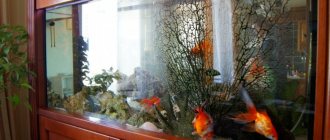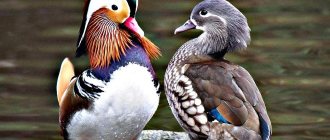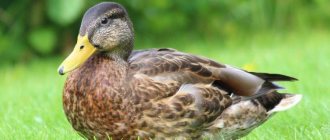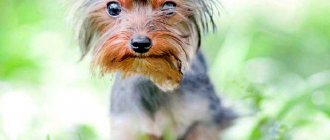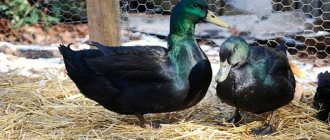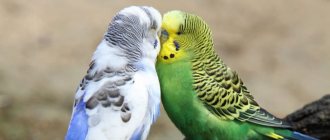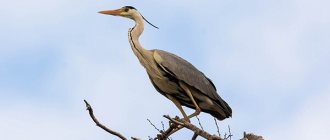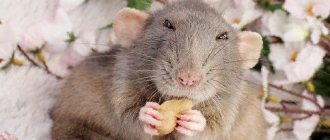The wild duck is one of the most common and familiar birds inhabiting water bodies. A favorite game for hunters, it is valued for its large numbers, exciting hunting process and good taste of meat.
Despite the diversity of species and the large number of individuals, the population is constantly declining, and some bird breeds are already listed in the Red Book. This trend is facilitated by the actions of poachers and the drying out of water bodies.
Types of ducks
On the territory of Russia there are 31 species, mainly river and diving varieties.
Bird lifestyle
For their habitat, wild ducks and any others almost always choose places in the immediate vicinity of water bodies.
Ideally, these are bays, wetlands, and rivers with a lot of different vegetation.
If this is a place where it is impossible to hide, then most likely the bird will not settle there. That is, it is unlikely that you will be able to find a bird on any body of water whose shores are bare.
Variety of teals
The birds owe their name to the characteristic sounds they make. Adult ducks can be about 40 cm in length, while drakes are larger and have brightly colored feathers. The mating colors can only be seen during the breeding season. Once this time has passed, the drakes become gray and inconspicuous, like their ducks.
Teal whistlers
The drake has a green stripe that starts in the eye area and ends at the back of the head. During the mating season, drakes are able to dance for several hours near their chosen ones, performing intricate movements both in the air and on the ground.
Teal-whistle
Teals
The main difference is the white stripe that adorns the bird's head. The species is characterized by very noisy mating games.
Teal-whistle
Teal-kloktunks
Can be considered the most noble representative of teal. In our country, these ducks are rare guests, which is why they are highly valued by hunters as a trophy. Nests are built in the northern regions of Asia and Sakhalin. Drakes can be distinguished by the characteristic emerald-golden feathers on their heads.
Teal
Marbled teals
These birds are smaller in size than kloktuns. An adult weighs about 0.6 kg. The plumage of drakes and ducks is practically indistinguishable. In our country, birds can be found in the Caspian region and in the Volga delta. Today the species is very rare; they were last described more than 33 years ago. The character of ducks is trusting and fearless. They spend almost their entire lives in water; the birds swim and dive beautifully. The population is declining due to the destruction of its natural habitat - small bodies of water with a large number of plants.
Marbled teal
Merganser
Representatives of the breed are characterized by a cylindrical beak, along its edges there are small, but very sharp teeth. Thanks to their elongated body and neck, ducks become similar to loons and grebes.
Large mergansers
Most often, birds settle in forests. Grown drakes reach a length of more than half a meter, ducks are somewhat smaller. The weight of an adult is over 1.5 kg. The beak is red and the paws are orange. As summer approaches, drakes begin to develop white feathers next to their wings. You can distinguish a duck from another species thanks to the forelock growing on its head.
Great merganser
Medium-sized mergansers
They inhabit northern forest zones. The body length of drakes is more than 60 cm, and that of ducks is more than 55. Adult birds gain weight of about 1000 grams. The coloring of the paws and beak is identical to that of large mergansers. The back of the head is decorated with a well-developed crest. As summer approaches, drakes grow black feathers next to their wings, creating a wedding pattern that attracts ducks.
Duck and drake mergansers
Scaly mergansers
They are among the rarest representatives of this breed. Sometimes birds can be seen in the Far East region. The color of the feathers coincides with the average mergansers, the difference lies in the size. Scaly representatives have a body length of about 40 cm and a weight of 0.5 kg. Ducks, unlike drakes, wear a large crest on their heads.
Scaly-sided merganser
Pintail
It is one of the most common birds in our country. Can be found everywhere except in the southern and northern regions. Drakes have a large build and can reach a length of more than 60 cm, ducks are somewhat smaller - from 50 cm. The average weight is about 1000 grams. Compared to other ducks, they have a long, thin neck and sharp tail feathers.
By the onset of the mating season, the drakes remain the same color as they were, the color of the feathers practically does not change. They prefer to graze in dense coastal grasses.
Pintail in flight
Shoes
Can be found everywhere except the tundra. The bird is of medium size with a body length of 50 cm and a weight of 1000 grams. A distinctive feature is the beak of unusual width. Ducks spend a lot of time in ponds; they use grass, aquatic plants, and small insects for food. Drakes have black beaks, while ducks have brown-green beaks.
Pair of Shovelers
rump ducks
They are large wild ducks that gain a kilogram in weight and are capable of growing up to 50 cm. Females have a dark chocolate coloration, similar to wigeons, with a gray beak as a distinctive feature. With the onset of the mating season, drakes become covered with bright feathers, against the background of which the females become lost in their modest color.
Drakes have dark green plumage on the head, sides and collar. White feathers grow on the neck, and a bronze and white feather can be seen on the top of the head.
Their distribution range is quite wide; due to their appearance, they are often bred in private backyards. It prefers to nest in eastern Asia, northern Japan, the Kuril Islands, and the central zone of our country. Red-tailed ducks prefer wet meadows, plains and fresh water bodies.
Being in constant motion, they weigh little, but hunters still hunt them with pleasure.
Ortail drake
We invite you to join our Zen channel and group on VKontakte or Odnoklassniki, where new articles are published, as well as news for gardeners and livestock breeders.
Similar articles:
- Raising musk ducklings, how to get a healthy and strong bird?
- Breeding Indian ducks naturally, what problems may arise?
- How to incubate turkey eggs?
Contact between ducks and people
If we talk about breeding ducks, the important point here is that ducks, as a rule, get used to people in a very short time and therefore can often be seen on any body of water in the city. They accept almost any treat from people without any problems, and easily make contact.
Ducks are considered migratory birds, so they migrate directly to feed. When it gets cold outside, it becomes difficult to get food and then the ducks fly south.
In the spring they always return. By the way, an interesting point is that ducks, which permanently live in southern latitudes, also do not always remain in place and necessarily migrate to escape the heat and drought.
Active flights in birds begin after the duck takes wing and is truly strong enough to be ready to fly long distances.
When migrating, the flock must follow the leader, maintaining order. Almost all flight routes pass through places where food can be found.
Appearance
Ducks are birds of medium and small size with a relatively short neck and a tarsus covered in front with transverse scutes. The color of the plumage is varied; many species have a special “mirror” on the wing. A number of species are characterized by pronounced sexual dimorphism during the breeding season, most often manifested in different colors of the plumage of the male and female. Most species moult twice a year; summer – full, autumn – partial.
Domestic ducks are descended from the mallard. Drakes of domestic ducks weigh 3-4 kg, ducks - 2-3.5 kg. The average annual egg production is up to 250 eggs. Breeds of domestic ducks are divided into meat (Peking, gray Ukrainian, black white-breasted), meat and egg (mirror, khaki Campbell), egg (Indian runners). Ducks are bred in many countries, including Russia.
- long eared hedgehog
- Cross spider
- Reptiles
- 72 facts about plants
- Animals of Siberia
- 35 facts about giraffes
Ducks of cultivated breeds, in comparison with wild ones, as a result of artificial selection and selection, have higher egg production and greater weight. Ducks of meat breeds lay up to 140-150 eggs per cycle, and egg-laying ducks lay 200-250, while outbred ducks lay only about 40 eggs.
Photos of ducks
Nutrition
The diet of this bird consists of aquatic plants, fish, insects, small aquatic animals - crustaceans and mollusks, which it obtains from the water and from the bottom of reservoirs. What do wild ducks eat in winter and early spring, when there is ice and it is difficult to get food from the water? At this time, ducks feed on the stems and seeds of coastal plants. In the warm season, fruits and berries from shrubs and trees growing near ponds are added to the menu.
Ducks can be called orderlies of reservoirs. Due to the fact that birds eat mosquito larvae in large quantities, this significantly reduces the reproduction of insects.
Reproduction
Individuals reach sexual maturity by the end of the first year of life . Early signs of mating are noticeable with the onset of autumn, when the male has not even acquired the mating plumage. Despite this, the active phase of mating begins only after winter. It is at this time that ducks form pairs. The drake descends into the water and begins to stretch its neck vertically, at the same time twitching its head up and down and its tail spread out like a fan.
Flirting with a potential mating object is accompanied by the production of low sounds that resemble the cries of a raven. It often happens that several males chase one female, during which the rivals deliberately flop onto the water, sweeping one wing along the water surface, thus demonstrating their superiority . Birds generally fly to the nesting site having already found a partner. It should be noted that the female often chooses the same lake or pond where she herself was born. The mating process takes place on the water.
Nesting
Gray ducks nest in pairs or small colonies without a clear hierarchy. Settlements in the form of diffuse colonies are more often found near small islands. Near the nests of ducks there are often flocking birds (gulls, terns, waders), which are able to notify in time of an approaching threat.
The resulting pair is in no hurry to set up a nest. The first branches for creating future housing will be delivered only after several weeks have passed after adaptation to the new place. The nest is usually located near water , but on dry soil. The place is reliably camouflaged from all sides using bushes, reeds or tufts of dry tall sedge, but sometimes the nest remains open. In rare cases, birds make their nests at a distance of up to one kilometer from the reservoir.
The female is responsible for digging the hole for the nest. With her paws she digs a hole (10–20 cm), and then carefully covers it with dry grass and soft brown feathers plucked from her chest.
Visually, the nests look more perfect and protected than structures for incubating eggs in other species of ducks. The completed building has a diameter of about 20–40 cm, and the depth of the tray can reach 20–30 cm.
A full clutch contains about 5–10 white eggs. Ocher and yellowish tints are possible. The average size of eggs is 55x45 mm. The incubation period is approximately 30 days. At this time, the drake leaves the female alone with the future offspring to complete the seasonal molt.
After the ducklings hatch from the shell , dry out a little and get stronger, they follow their mother to the pond. The brood tries to stay in a deeper area than usual or swims to another spacious lake or reservoir. Among gray ducks, the union of broods is not common, which is how they differ from other dabbling ducks. But the mother will not drive away an individual duckling from another group that accidentally joins the family. The chicks stay close to their mother for up to two months until they learn to fly.

